Eucalyptus trees are evergreen, fast growing, native to Australia. They belong to a class of flowering trees, shrubs, and Mallees from the myrtle family (Myrtaceae).
Silver round leaves with a distinctive fragrant oil mark Eucalyptus trees, or gum trees as most of its species are called. The scent nature of the plant makes it useful for both fresh and dried floral arrangements.
Used in cleaning and medicinal products, eucalyptus oil’s herbal benefits are unmatched.
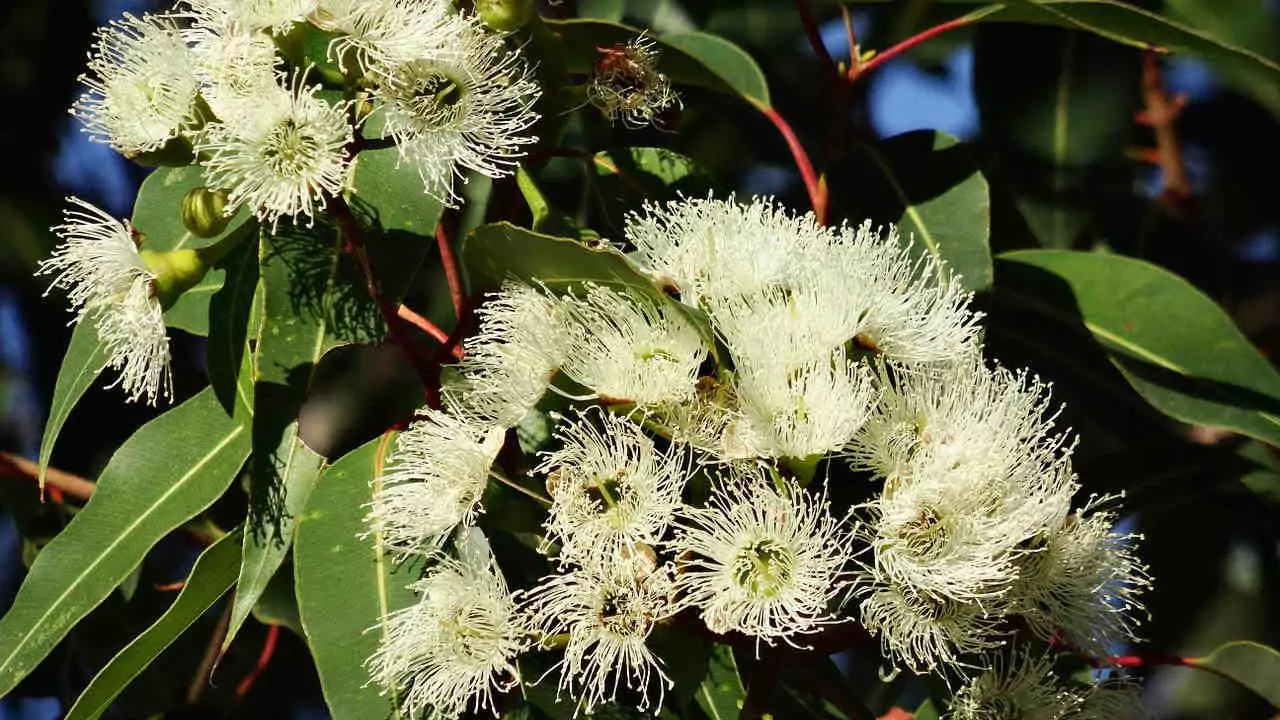
Where Can You Find Eucalyptus Trees?
Eucalyptus trees are best grown within USDA plant hardiness zone 8 to 11, where they’re remarkably hardy. Other areas may enjoy planting these Australian gum tree species as seasonal plants grown from seed.
Some species of Eucalyptus grow up to 60 feet, while others will only hit sub 3 foot shrub sage. Roughly, eucalyptus trees grow from 10 to 15 feet annually.
What Are the Different Types of Eucalyptus?
With over 700 species and subspecies of eucalyptuses, Australia and Tasmania are home to most of them, and are popular as gum trees eucalyptuses.
Yet some are more widely used in the United States for some reason.
Blue gum or Eucalyptus globulus is the most popular. This specie is commonly grown due to its abundance and has a high tolerance to drought, which makes it useful for forestry plantations. This is the type that is mostly sold in tree nurseries.
Eucalyptus globulus can reach a height of 150 to 180 feet. Blue gum has an upright stalk for 2/3rds of his height with a crown at the amalgamating tip.
The eucalyptus trees come in a wide variety of sizes. The different species fall into several tree types with the most popular being:
1. Marlock Eucalyptus
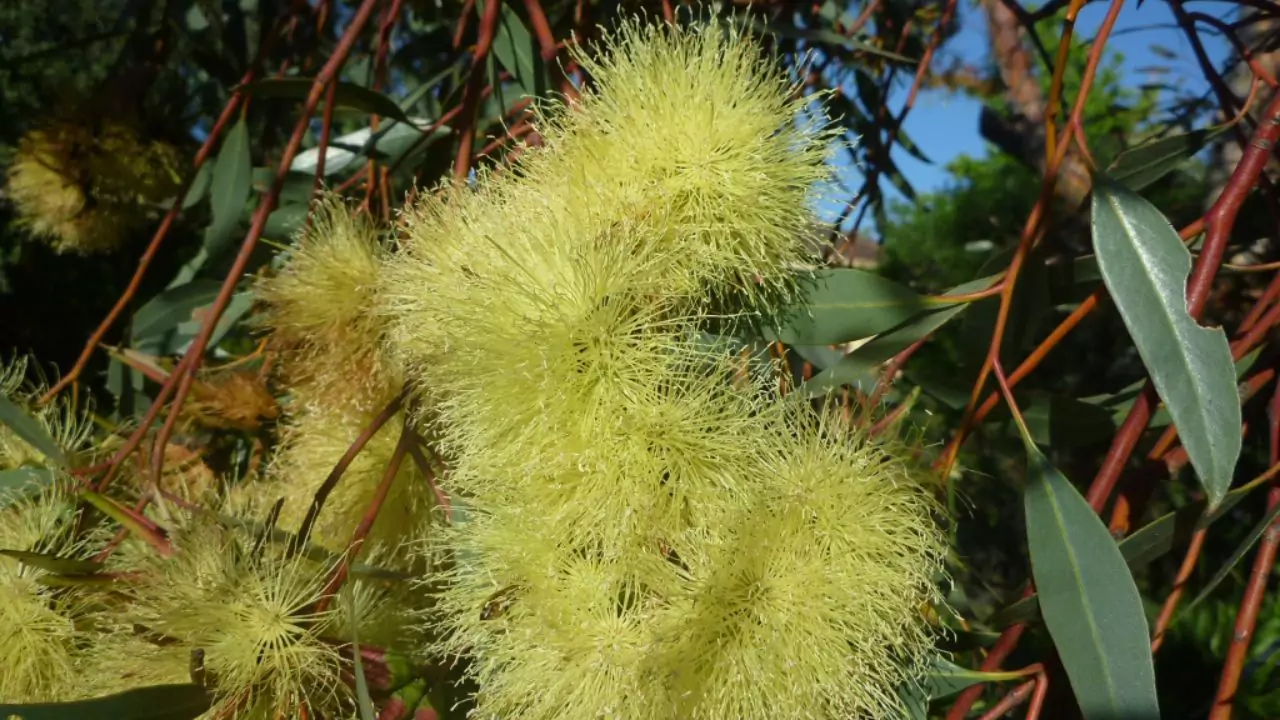
One of the two most popular Eucalyptus varieties, Eucalyptus Marlock, originates from Australia and is comprised of Eucalyptus platypus. Grows upright for some height, making it suitable for low clipped hedges. Its branches are dense as well as its leaves, which have great flexibility to reach the ground.
Marlock Eucalyptus does best in zones 7-8 on the USDA plant hardiness zone map.
Eucalyptus platypus, or rounded-leave moort, is a small tree of perfect structure for the modern gardener. It is versatile as it can thrive in sandy, loamy, or clay-rich soil.
Moort grows anywhere between 5-33 feet tall on a single stem, forming thickets. The dense foliage on this type of eucalyptus makes it ideal for ornamental purposes.
2. Mallet Eucalyptus
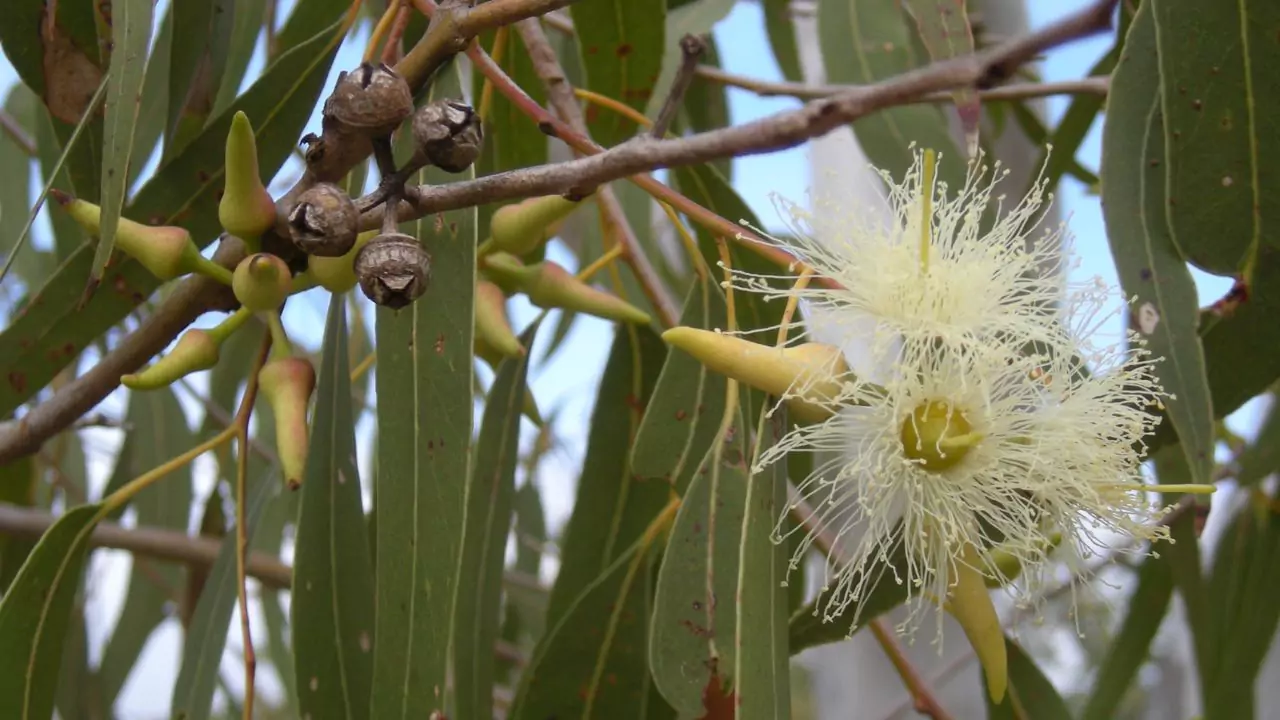
Mallet eucalyptus is a variety of eucalyptis species which have a slender trunk whose branches are angled upwards, creating open spaces between them.
The mallet variety does well within zones 9-10 on the USDA plant hardiness scale.
One of the most well known varieties from this type of species is Eucalyptus astringens. These trees grow to a maximum height of between 5-49 feet tall with lance shaped leaves. They have pendulous flower buds that are most commonly in clusters of seven and have creamy flowers.
The timber and firewood applications of these trees are outstanding. This tree’s bark is said to have in excess of 40% tannin, making it appropriate to use in leather goods and making strong adhesives.
3. Mallee Eucalyptus
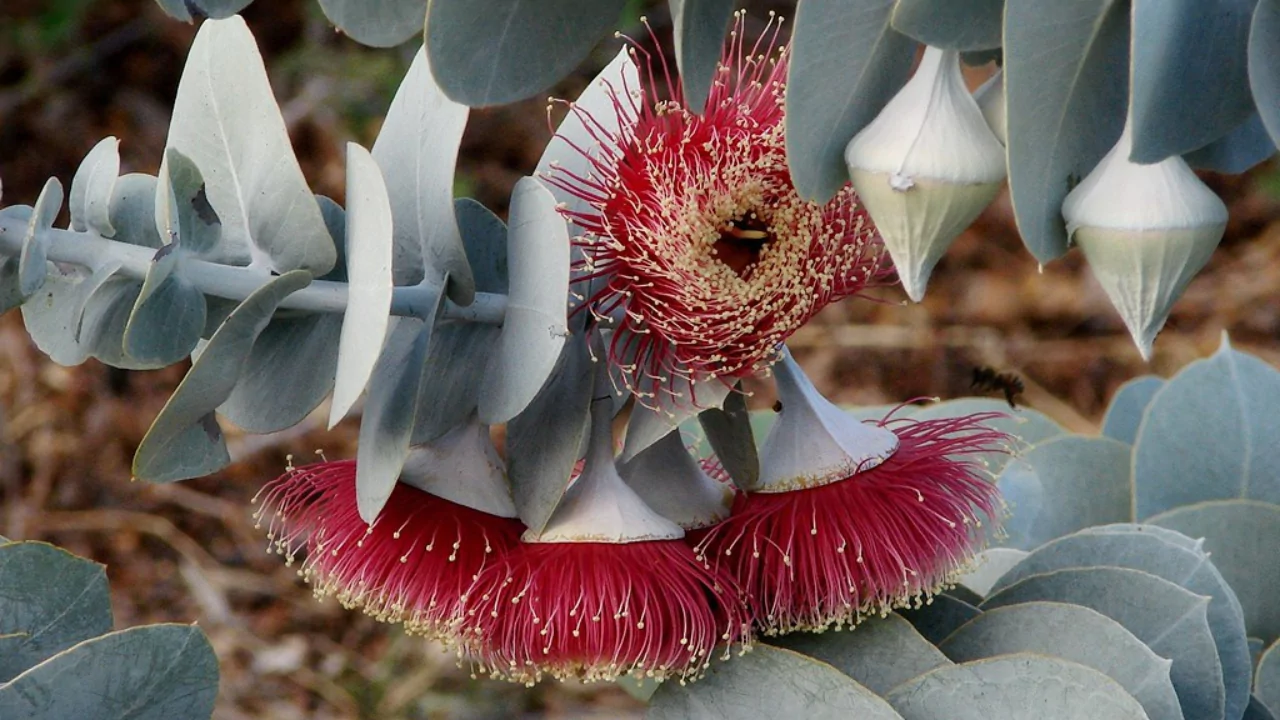
Mallee is a species of eucalyptus characterized by low growing shrubs. Malles are multi-stemmed and generally grow to about 10 feet tall, although they can reach 25 feet in favorable conditions.
One of the most popular varieties of mallee is Eucalyptus erythronema.
E. erythronema, a species of Eucalyptus from Western Australia, is commonly called a red flowered mallee.
It is shrub like in form and attains a height of 7 to 20 feet, with single or multi-stemmed varieties. The older portions of the trunk has white bark, while the younger parts has green bark covered in a pinkish talcum powder.
Generally, it produces red flowers, but pink, yellow, and creamy white blooms are also possible.
Eucalyptus erythronema can add aesthetic value to home gardens as an ornamental plant, and is also valuable in apiculture, leather industry, and horticulture.
Clearly, the various types of eucalyptus trees share similarities that may complicate identifying them. Here is a summary for easy understanding of comparison between three main types of eucalyptus species:
| Mallet Eucalyptus | Marlock Eucalyptus | Mallee Eucalyptus | |
| Distinguishing Features | Open branch form Single trunk USDA zones 9-10 Lacks lignotubers and epicormic buds Dense terminal crowns | Dense foliage Single trunk USDA zones 7-8 Lacks lignotubers Low growing branches | More shrub than tree Multi-stemmed USDA zones 7-10 Underground lignotubers Average height between 10-25 feet |
| Popular Varieties | Eucalyptus astringens Eucalyptus mannifera Eucalyptus falcata Eucalyptus cladocalyx | Eucalyptus platypus Eucalyptus redunca Eucalyptus decipiens Eucalyptus nutans | Eucalyptus erythronema Eucalyptus gracilis Eucalyptus socialis Eucalyptus oleosa |
Eucalyptus Tree Varieties to Try
I have always liked the unique color patterns of cream and brown on Eucalyptus gunnii’s bark, which can grow up to 80 feet tall. What astonishes me more is the fact that younger trees produce bluish gray leaves, while older ones turn silverish green.
Eucalyptus cinerea can reach heights of 25-60 feet in warm regions but is usually cultivated as an annual shrub in colder climates, growing to 6-8 feet in just a season. This specimen comes with red or cinnamon colored flakes.
Eucalyptus dalrympleana reaches a height of 50 to 70 feet and has eye-catching cream colored bark. Eucalyptus trees mostly do not have slender leaves, but Eucalyptus dalrympleana does have willow shaped leaves. The leaves are also aromatic, but do not have the rounded form typical of eucalyptus leaves.
Known as the rainbow eucalyptus, Eucalyptus deglupta is a remarkable specimen. This species is particularly popular due to its multicolored bark, which earns it the name euphoric gum. Its colorful shredded ribbons beautifully define the tree’s bark.
What are Eucalyptus Trees Used for?
Surely, eucalyptus trees are well known for their distinct scent, however, their utility goes far beyond that. Eucalyptus species are excellent choices as shade trees. They may be utilized in a number of areas, including:
Forest Restoration and Fauna Uses
One of the common uses of eucalyptus is planting them in places suffering from deforestation. The trees are beneficial for restoring the ecosystem and addressing the urgent issue of climate change.
The cultivation of eucalyptus trees in regions of the forest enhances the fauna that lives around them. A variety of animals use this tree as a source of food and a place to shelter:
- Koalas: A marsupial herbivore that reaches its peak of existence in a eucalyptus forest is Koalas. Ranging all the way from the south-eastern coast of Australia to the south-eastern coast, they horizontally attack a variety of eucalyptus trees. Koalas consume the leaves and other foods by grabbing branches with their opossessive thumbs.
- Common Wombats: These carcasses are a relatively more also aligned by Koalas. Unlike their close relatives, wombat, in general a terrestrial animal is a kind of mammal. Thus, in most cases it is more plausible to find them on ground as opposed to tree hugging koalas. In terms of similarity, they do share an important food source. Wombats and koalas are frequently competing against one another for the eucalyptus tree.
- Greater Gliders: The name of these marsupials comes from the distance they are capable of gliding. They live in other eucalytis trees and like Koalis, they feed on the leaves of the tree.
One of the cons of afforestation with the mentioned Australian native plants is the possible detriment to other species. The Eucalyptus globulus will pose a threat since its bark and leaves are harmful to non-marsupial life when directly ingested.
“The person or animal may suffer nausea, vomiting, and diarrhea after ingesting the bark or leaves. If sufficient quantities are consumed, it may lead the individual to fall into a coma.” — SF Gate
Gum tree species also negatively affect other bird species. ScienceDirect showed in one study that such plantations contribute to the decrease in the variety of bird species.
Timber
Apart from afforestation purposes, the eucalyptus tree is frequently grown for its wood in an eucalyptus plantation. Eucalyptus wood is well known for its termite resistance, as well as its resistance to deterioration. The tree can last ROT for up to a decade in wet conditions. Eucalyptus stands are a fire hazard, however, so their use as windbreaks in North American landscapes is often problematic.
In carpentry, eucalyptus trees are useful because they are easy to sand, polish, and cut. Other craftsmen and furniture makers also find different parts of the tree appealing:
- Its sapwood has a pale color and striking patterns.
- The heartwood’s color is crimson and deepens further with age.
Eucalyptus trees are often used in construction as timber for:
- Wooden bowls
- Furniture
- Floorings
Aromatherapy
Eucalyptus oil serves its purpose as an essential oil due to its pleasant soothing scent. This species of tree is also used for extracting essential oils for the purpose of:
- Relaxation
- Stress management
- Meditation
- Sleep therapy
- Energy stimulation
You’re bound to find extracts in most massage parlors and places of relaxation.
Medicinal Use
Another widely-renowned use of its essential oil lies in its health recovery benefits. There’s a wide variety of uses for the tree’s oil, including:
Respiratory Issues
A number of herbal remedies include relief from symptoms like:
- The common cold
- Bronchitis
- Sinusitis
- Respiratory tract infection
- Asthma
- Nose congestion
- Sore throats
In such cases, the plant is used in the form of boiled eucalyptus leaves, ointment, and/or vapor.
Physical Pain
Some researchers believe that rising ointment from eucalyptus species acts as an analgesic, helping to relieve pain. Eucalyptus oil is also commonly used by patients who have arthritis. This can be applied as topical ointment to soften stiff muscles and sore joints.
Insecticide and Repellent
Besides its many benefits, eucalyptus also helps eliminate and repel insect pests. MedicalNewsToday indicates:
“The United States registered the oil of eucalyptus as an insecticide and miticide in 1948.”
Some recommend the use of oil of lemon eucalyptus as a mosquito repellent, and it does serve this purpose.
Eucalyptus Products in Dental Protection
You can find herbal toothpastes, mouthwashes, and even gum in stores containing the extracts. The plant’s antibacterial and antimicrobial properties are the reason for this. This means that it can effectively prevent bacteria that cause the decay of teeth.
How to Plant Eucalyptus
All varieties of eucalyptus trees do best in full sun, though some tolerate light shade. Provided the soil is well drained, they seem to adapt well to a wide variety of soil type and climate.
Spring or fall is the best time to plant eucalyptus trees, depending on your location and climate. While digging a hole, make it slightly bigger than the root ball and be gentle with the roots when planting.
It’s best to leave sensitive eucalyptus roots undisturbed.
You can cultivate eucalyptus in a pot as a perennial until it becomes too large. At this point you can either donate it to a park or relocate it to your backyard.
Ideal eucalyptus varieties for growing in containers include:
- Eucalyptus archeri
- Eucalyptus crenulata
- Eucalyptus coccifera
- Eucalyptus nicholii
- Eucalyptus parviflora
- Eucalyptus vernicosa
How to Grow Eucalyptus in a Container
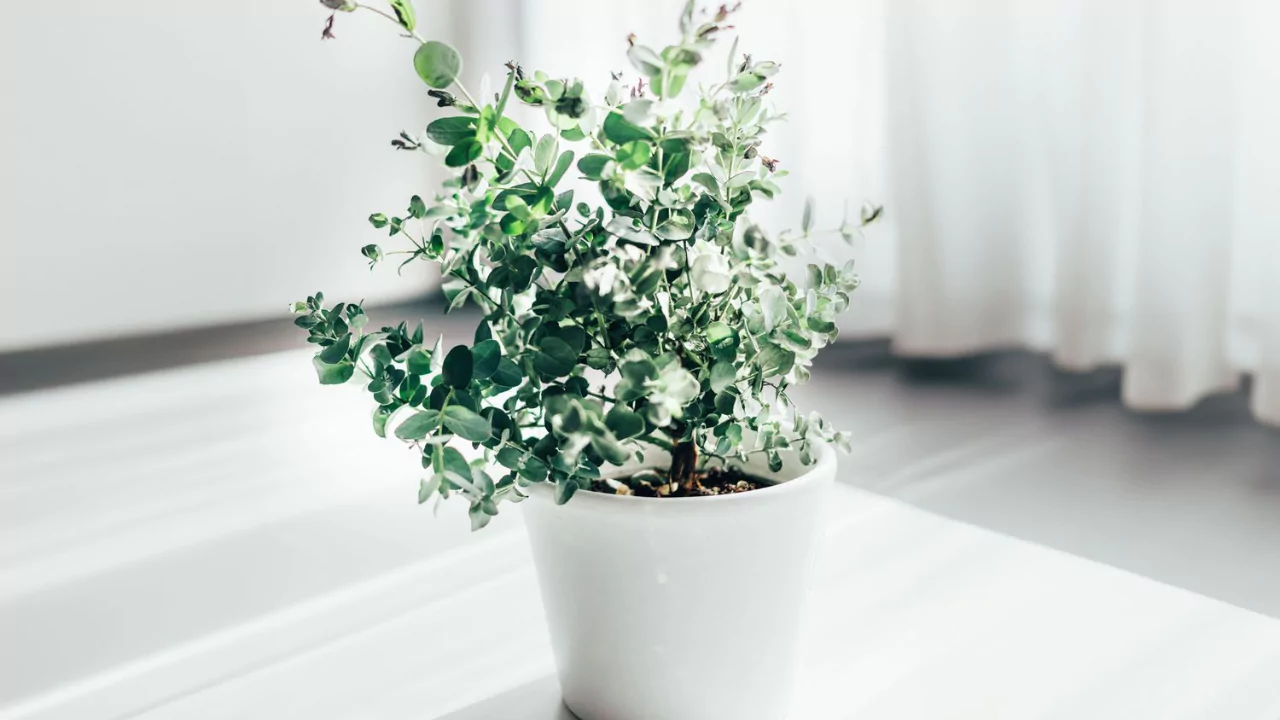
To ensure the greatest success when planting eucalypt species in a container, start with the largest pot possible. Place the plant in the largest container possible for the best results.
Once the plant outgrows the pot, it is preferable to discard it rather than attempt transplanting. Eucalyptus plants that are potted seldom dry out.
In warmer temperatures, you can place the pot containing the eucalyptus outdoors and bring them in before the first frost hits in autumn.
Eucalyptus need a lot of sunshine to grow effective so make sure to choose a sheltered spot with sunlight near a window where you can easily water it, maybe next to a south facing window.
If you wish to grow the plant from the seeds, it is critical to know that seeds from eucalyptus trees need to go through a stratification phase.
How Do You Stratify Eucalyptus Seeds?
To stratify successfully, the plants must ensure that all the conditions required to remove dormancy barriers are present. For eucalyptus seeds, this entails enduring a cold treatment to simulate the period when seeds are sitting dormant in the soil during winter.
You should keep the estimated period for the processing, as it can take a while for the granules to stratify.
When ready, place your seeds in a sealable bag or container, pop it in the refrigerator and leave it there for two months to soften the seed coat.
Make sure that the seeds are ready after the last frost. Sometime in February would be ideal. You can confirm the dates on your local meteorological department’s website.
After the two months, sow the seeds in indoor pots or peat pots if you intend to move them outdoors later on. This will help reduce transplant shock.
What is Stratification
Seeds require a few predetermined settings to be able to germinate. In order to meet these requirements, stratification is the approach undertaken. It supports the seeds in breaking their dormancy state, thereby facilitating germination.
Through natural means, seeds go through a winter stratification period, conditioning them for sprouting in springtime.
When planting eucalyptus in a pot, ensure that there are porous potting soil rich in perlite. You may cover the seeds with a light layer of horticultural sand to ensure warmth and moisture as germination progresses.
Mist the seeds often, approximately every one to two days, to settle the soil without flooding it.
Do not forget that warmth is essential at this phase. To achieve this, you may relocate the pot to a warmer area of your home, or even place the pot on a heating pad until germination occurs.
Once germination has taken place, remember to protect the young species from full sun exposure while easing up on water usage. Exposing them to the elements becomes an issue due to the seeds’ fragile, shallow roots that make them highly susceptible to breaking or toppling over due to wind, curious children, or pets.
The tree requires regular moisture for healthy growth, but does tolerate periods of drought.
How to Care for Your Eucalyptus Plant
Eucalyptus trees are relatively low maintenance, especially when they are growing outside in the yard where they often tend to take care of themselves.
If you have potted eucalyptus plants, remember to water them regularly, especially during the hotter months of the year. While eucalyptus is drought resistant and will bounce back from dropping wilt, he will not be able to recover if withered too much.
Do not overwater the plant either. Allow the soil to somewhat dry out before you water the plant again, possibly once a week.
Fertilizer is not needed for eucalyptus trees growing in the ground because they do not need phosphorus. With potted plants, however, it may be necessary to add low-phosphorus, slow-releasing fertilizer.
Tree care also involves controlling the tree height through frequent pruning. This is especially helpful for the indoor species because it allows you to regulate the shape and size of the plant to keep it suitable for indoor use.
As for the outdoor species, eucalyptus trees do tend to accumulate a considerable amount of litter like leaves, bark and branches. These bark and leaves, while hazardous in fire, need to be raked regularly, especially during fall.
Eucalypts continue to be native invaders in Australia by covering 77% of its forest area. If Australian native species are planted in moist areas, they tend to thrive and spread out.
What Happens to the Bark on Eucalyptus Trees?
The bark appears to shed annually, however, the process truly clean exfoliation. Like most invasive species, eucalyptus trees also shed their bark annually. The shedding results in stunning peeling patterns. Each piece of barks marks itself to its counterpart in stunning orange-yellow hues. This process of shedding bark results unfurled burns stacked on each other, resembling orange yellow colors.
Eucalyptus Pests and Diseases
Some regions experience gall wasp pest invasion where singular tiny grubs infest stems and leaves, creating pinkish-brown protrusions known as galls.
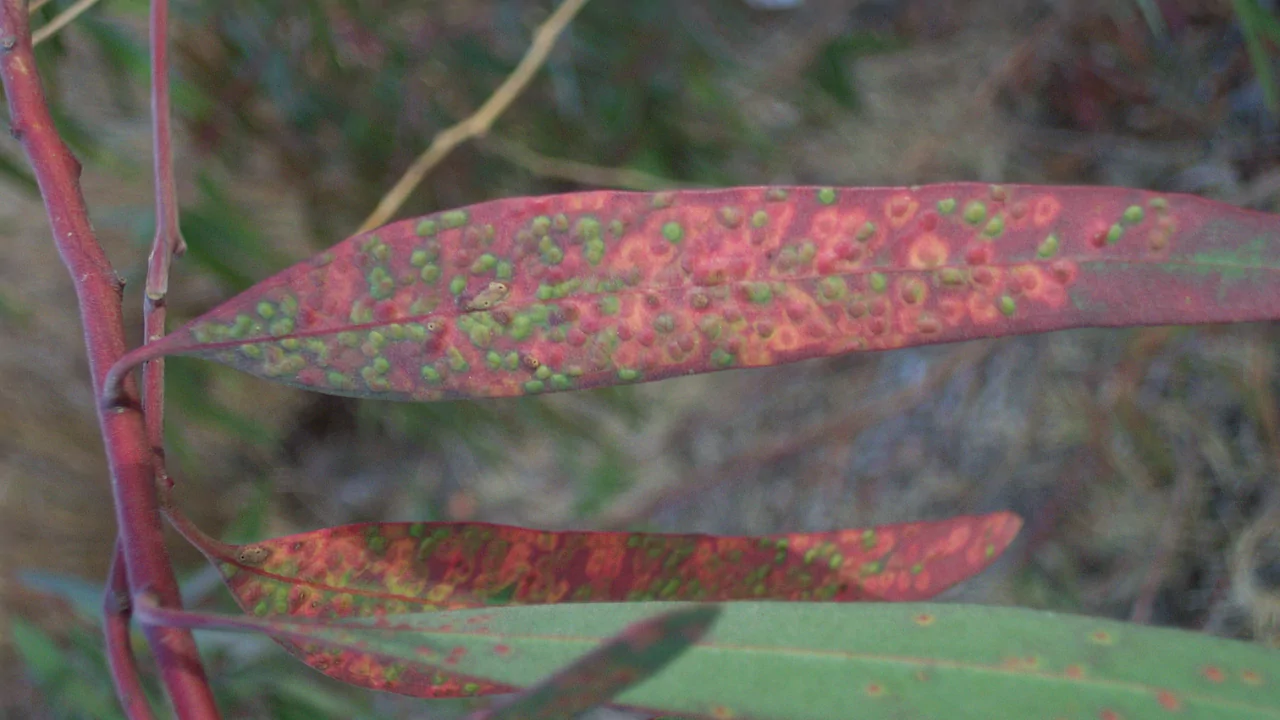
Infested stems and leaves in the fall are easier to reach and destroy and control the pests. For bigger trees, the solution to spray pesticides on smaller of potted species works, but becomes tricky.
The eucalyptus trees are also susceptible to canker disease which is brought on by the fungus Cryphonectria cubensis.
The disease is said to kill immature trees within their first 2 years which is done by girding the lower part of the stems. These trees usually die or wilt after experiencing intense heat during summer while the others will show signs of cracked bark and swollen vehicular bases.
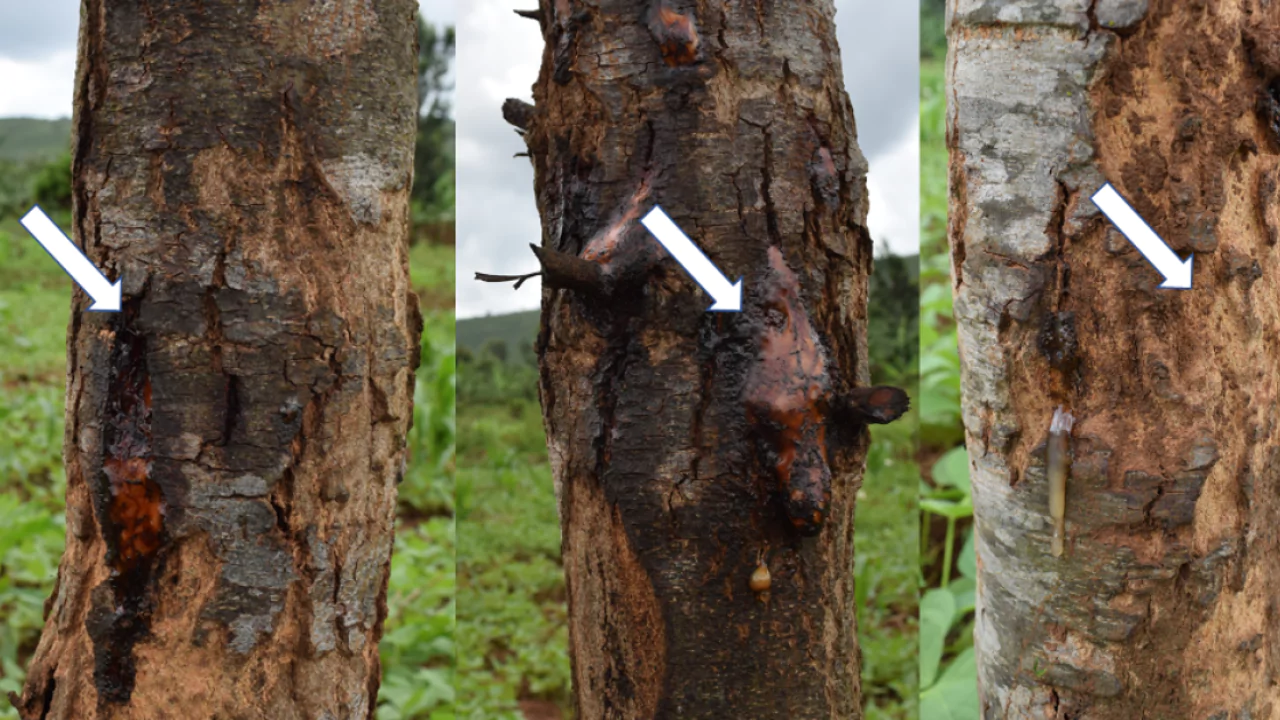
Canker infects the trees when the spores of the fungus get transported by wind or rain and get stuck in the injury.
As a result, the most useful procedure to treat canker is to limit any physical harm to the plant. In cases of unintentional injury, protective measures should be applied to the injury part.
Some species of eucalyptus trees are said to have much higher susceptibility to canker. Such species include:
- Eucalyptus camaldulensis
- Eucalyptus grandis
- Eucalyptus saligna
- Eucalyptus tereticornis
It is birding noted that these species should not be planted in regions with high temperatures and heavy rainfall since this is where the fungus flourishes.
Research has proven that adding plants to your space is beneficial as it enhances your quality of life. These are just a few examples of ways we can benefit from having more plants in our lives.
However, knowing what plant species fits your needs and the region can be very complicated not to forget how to tend to your plant